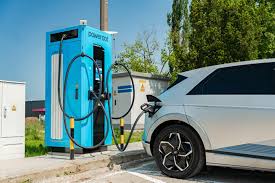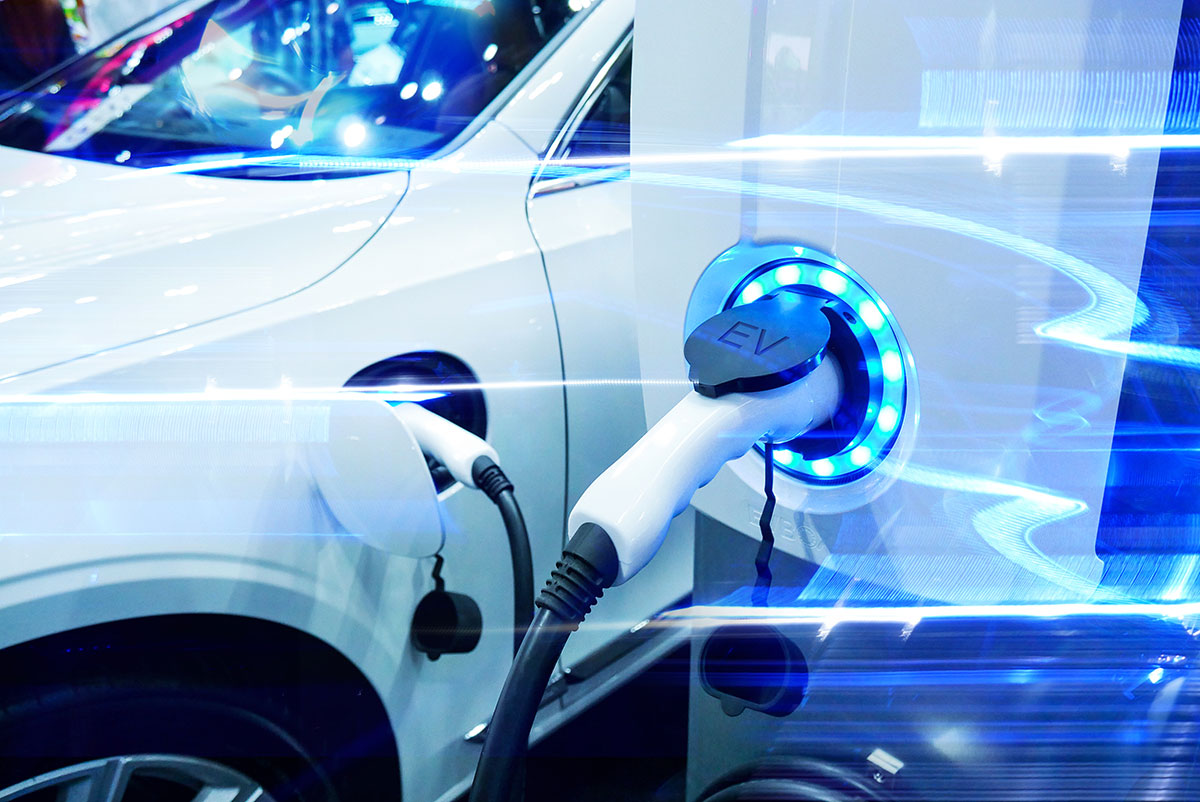The Evolution of Electric Vehicles: How EVs Are Shaping the Future of Transportation

Introduction
Electric vehicles (EVs) are rapidly changing the landscape of transportation. With increasing concerns over climate change, rising fuel costs, and the environmental impact of traditional internal combustion engine vehicles, EVs are being hailed as the future of sustainable mobility. Advances in battery technology, government incentives, and shifting consumer preferences are driving the growth of the EV market. In this article, we will explore the evolution of electric vehicles, the key factors contributing to their rise, their benefits and challenges, and how they are shaping the future of transportation.
1. The History and Evolution of Electric Vehicles
- Early Beginnings of Electric Vehicles
- The concept of electric vehicles dates back to the 19th century. In the early 1800s, inventors such as Robert Anderson and Thomas Parker built the first prototypes of electric carriages and carts. These early electric vehicles were powered by non-rechargeable batteries and had limited range and performance.
- By the late 1800s, electric cars gained popularity in urban areas due to their quiet operation and ease of use compared to the noisy, polluting gasoline-powered vehicles. In fact, in the early 1900s, electric vehicles were more common than gasoline-powered cars in the United States.
- The Decline of Electric Vehicles
- Despite their early success, electric vehicles faced several challenges that led to their decline in the early 20th century. The development of the internal combustion engine, the mass production of gasoline cars by Henry Ford, and the discovery of vast oil reserves made gasoline-powered vehicles cheaper and more practical.
- In addition, the limited range of early electric vehicles and the lack of charging infrastructure hindered their widespread adoption. By the mid-20th century, electric vehicles had all but disappeared from the market, replaced by more affordable and efficient gasoline-powered cars.
- The Resurgence of Electric Vehicles
- The modern resurgence of electric vehicles began in the late 20th century, driven by rising environmental concerns, advancements in battery technology, and the push for energy independence. In the 1990s, automakers such as General Motors and Toyota introduced electric cars like the EV1 and Prius, but they were met with limited success due to high costs and consumer skepticism.
- The turning point came in the mid-2000s with the launch of Tesla’s Roadster, which demonstrated that electric vehicles could be fast, stylish, and capable of long ranges. This sparked a renewed interest in electric vehicles, and other automakers began investing in EV development, leading to the explosion of EV options available today.
2. Key Factors Driving the Growth of Electric Vehicles
- Advancements in Battery Technology
- One of the most significant factors driving the growth of electric vehicles is the improvement in battery technology. Lithium-ion batteries, which are commonly used in modern electric cars, offer higher energy density, longer range, and faster charging times than previous battery technologies.
- As battery production scales up and research into solid-state batteries continues, EVs are expected to become even more affordable, efficient, and practical for everyday use.
- Government Incentives and Regulations
- Governments around the world are offering various incentives to encourage the adoption of electric vehicles. These incentives include tax credits, rebates, and subsidies for EV buyers, as well as grants for manufacturers to develop new technologies and expand production.
- In addition, governments are implementing stricter emissions regulations, which are pushing automakers to develop cleaner vehicles. Many countries have set ambitious targets to phase out gasoline and diesel vehicles in favor of electric cars, with some planning to ban the sale of new internal combustion engine vehicles by 2030 or 2040.
- Consumer Demand for Sustainability
- Growing awareness of climate change and environmental issues has led to a shift in consumer preferences. More people are seeking sustainable alternatives to traditional gasoline-powered cars. Electric vehicles, with their zero-emission operation, offer a cleaner and more eco-friendly mode of transportation.
- As the cost of electric vehicles continues to decrease and the variety of available models increases, consumers are becoming more willing to make the switch to EVs.
- Improved Charging Infrastructure
- One of the major challenges facing electric vehicle adoption is the availability of charging infrastructure. In the past, the lack of charging stations made it difficult for consumers to rely on electric vehicles for long trips.
- However, the expansion of charging networks is addressing this issue. Public and private companies are investing in the installation of fast-charging stations, and home charging solutions are becoming more accessible. As the charging infrastructure improves, it will make owning and operating an electric vehicle more convenient for consumers.
3. Benefits of Electric Vehicles
- Environmental Benefits
- Electric vehicles produce zero tailpipe emissions, which means they do not contribute to air pollution or greenhouse gas emissions that are linked to climate change. When powered by renewable energy sources like solar or wind, EVs offer a completely clean transportation solution.
- By replacing traditional gasoline and diesel vehicles, EVs can significantly reduce the carbon footprint of the transportation sector, which is one of the largest sources of global emissions.
- Lower Operating Costs
- Electric vehicles are generally cheaper to operate than gasoline-powered cars. EVs have fewer moving parts, which means less maintenance is required. They don’t need oil changes, and brake wear is reduced due to regenerative braking systems.
- Additionally, the cost of electricity for charging an EV is lower than the cost of gasoline, making EVs more economical in the long run. Many electric car owners also take advantage of government incentives and rebates, further reducing the cost of ownership.
- Energy Independence
- Electric vehicles reduce dependence on fossil fuels, which are subject to price volatility and geopolitical instability. By switching to electric cars, countries can reduce their reliance on imported oil and encourage the use of domestically produced energy, such as renewable electricity.
- This shift towards electric vehicles is helping to diversify the energy mix and move towards a more sustainable and secure energy future.
- Improved Driving Experience
- Electric vehicles offer a smoother, quieter, and more responsive driving experience compared to traditional gasoline-powered cars. EVs have instant torque, meaning they can accelerate quickly and smoothly without the need for gear shifts.
- Many EV owners report that the driving experience is more enjoyable, with improved handling, reduced vibrations, and a greater sense of control due to the low center of gravity from the battery placement.
4. Challenges Facing Electric Vehicles
- Range Anxiety
- Despite advancements in battery technology, one of the most significant challenges facing electric vehicles is range anxiety—the fear of running out of battery power before reaching a charging station. While the range of many electric cars is sufficient for daily commuting, long-distance trips can be more challenging, especially in areas with limited charging infrastructure.
- However, as battery technology improves and the charging network expands, this issue is expected to decrease over time.
- High Upfront Costs
- Although the operating costs of electric vehicles are lower than those of gasoline-powered cars, the upfront cost of purchasing an EV can still be higher. This is mainly due to the cost of the battery, which is a significant portion of the vehicle’s price.
- As production scales up and battery prices continue to fall, the upfront cost of EVs is expected to decrease, making them more accessible to a wider range of consumers.
- Battery Disposal and Recycling
- As the number of electric vehicles on the road increases, so does the need for responsible battery disposal and recycling. The large lithium-ion batteries used in EVs contain materials that can be harmful to the environment if not properly recycled.
- Research into sustainable battery recycling methods is underway, and efforts are being made to create a circular economy for electric vehicle batteries, where materials can be reused and repurposed.
5. The Future of Electric Vehicles
- Advances in Battery Technology
- The future of electric vehicles will be heavily influenced by continued advancements in battery technology. Researchers are working on improving the energy density, charging speed, and lifespan of batteries, as well as exploring new materials like solid-state batteries.
- These advancements will make EVs more affordable, longer-lasting, and faster to charge, addressing some of the current challenges and accelerating the adoption of electric vehicles worldwide.
- Autonomous Electric Vehicles
- The rise of autonomous driving technology presents a unique opportunity to pair electric vehicles with self-driving capabilities. Autonomous electric vehicles could transform the transportation landscape by providing on-demand, shared mobility solutions that reduce congestion and emissions.
- The combination of electric and autonomous technologies could lead to a more efficient, sustainable, and safer transportation system.
- Global EV Adoption
- As more countries implement stricter emissions regulations and offer incentives for electric vehicle adoption, the global EV market is expected to grow significantly in the coming years. The widespread adoption of EVs will play a critical role in achieving global climate goals and reducing dependence on fossil fuels.
- The shift to electric vehicles will also lead to changes in the automotive industry, with traditional automakers and new entrants competing to produce innovative and affordable EV models.
6. Conclusion
Electric vehicles are not just a trend—they represent the future of transportation. As the world faces growing environmental challenges, the transition to EVs offers a cleaner, more sustainable alternative to traditional gasoline-powered cars. With advancements in battery technology, improved charging infrastructure, and growing consumer demand, electric vehicles are poised to become mainstream in the coming decades. While challenges remain, the potential benefits of EVs, such as reduced emissions, lower operating costs, and energy independence, make them a key solution for the future of transportation. As the EV market continues to grow, we can expect significant changes in the way we travel, from smarter vehicles to greener cities.





